Emma Walshaw is the founder of First In Architecture and Detail Library. She has written a number of books aiming to facilitate a better understanding of construction and detailing. First In Architecture is a website providing resources and guides for architects and students.
For many people, work is their life. They spend 40+ hours a week at the office and this time can be some of the most rewarding or most frustrating depending on how well your office space is set up. The planning of a workplace or office is not just about how the space looks, but also about what is important to employees.
There are many things to take into consideration as there are different factors that can impact productivity and employee morale. Here are just a few things to consider when designing a new office or workplace.
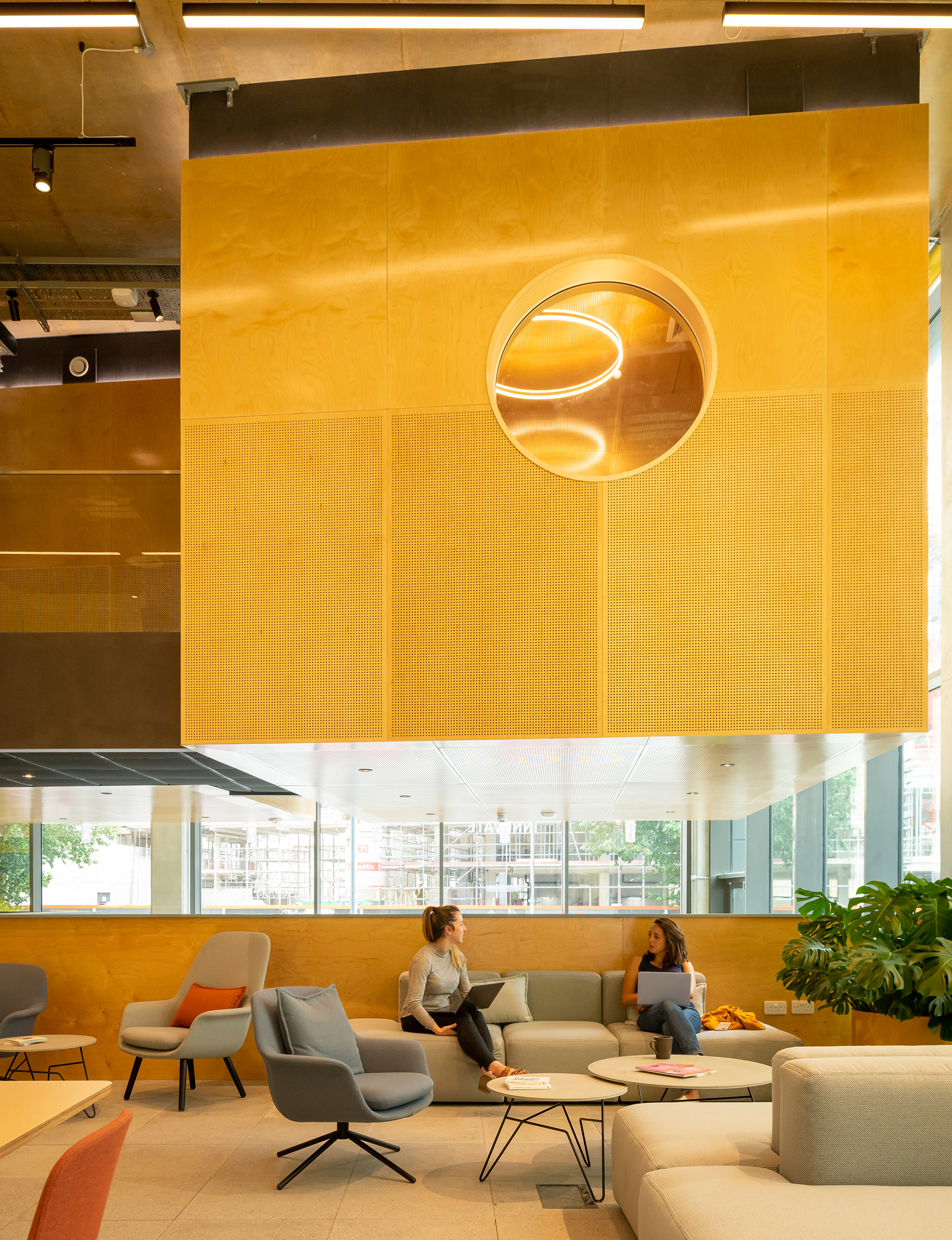
Plus X by Studio Egret West, Brighton, United Kingdom | Popular Choice, 2021 A+Awards, Coworking Space
A Changing Workplace
The shape of offices has changed over the last couple of decades, with office design becoming a way to attract talent, increase productivity and creativity, show off the companies modernity and get into architectural design websites and magazines. Google, anyone? In the 21st century, office design became fashionable.
Yet, with the era of Covid 19, work practices are rapidly changing. Suddenly, companies are not only offering flexible working hours, multiple work locations within one building, but also work from home. Only time will tell how long the work from home option continues.
These changes are leading to different new concepts for office design and a necessity for flexibility more than ever. Meeting the current needs of the organization is not the only challenge that designers face; they must also anticipate the company’s future needs and design with the adaptability required to fulfill them. Good office design has been attributed to improved health and wellbeing of employees, increased productivity, staff retention and sense of community. All the more reason to invest time and effort in creating a great office design.

Plus X by Studio Egret West, Brighton, United Kingdom | Popular Choice, 2021 A+Awards, Coworking Space
Office Planning
There are many variables and factors that will inform a new workplace design and this guide cannot cover the full gamut. However, we will explore some of the design considerations and key points to address when designing a new office.
Establishing the requirements of the organization that will use the office will be one of the first aspects of the design. At this point, input from many of the end users will be useful in creating a picture of the workplace experience that the company are looking to achieve.
How Will the Office Be Used?
What are the aims and objectives of the organization? What different duties and roles are carried out in the organization and how might that change in the future? How do the employees work now, and how do they want to work? What do the employees need in order to be as effective as possible? Do visitors come to the office?
How Does the Company Want To Portray Its Brand?
Does the organization want to show its brand and personality in the design of the office? What kind of brand values and messages does the company want to portray to its employees and visitors? Many more questions can be asked about the culture of the company and more to gain a deep understanding of who the company is and what they are trying to achieve.
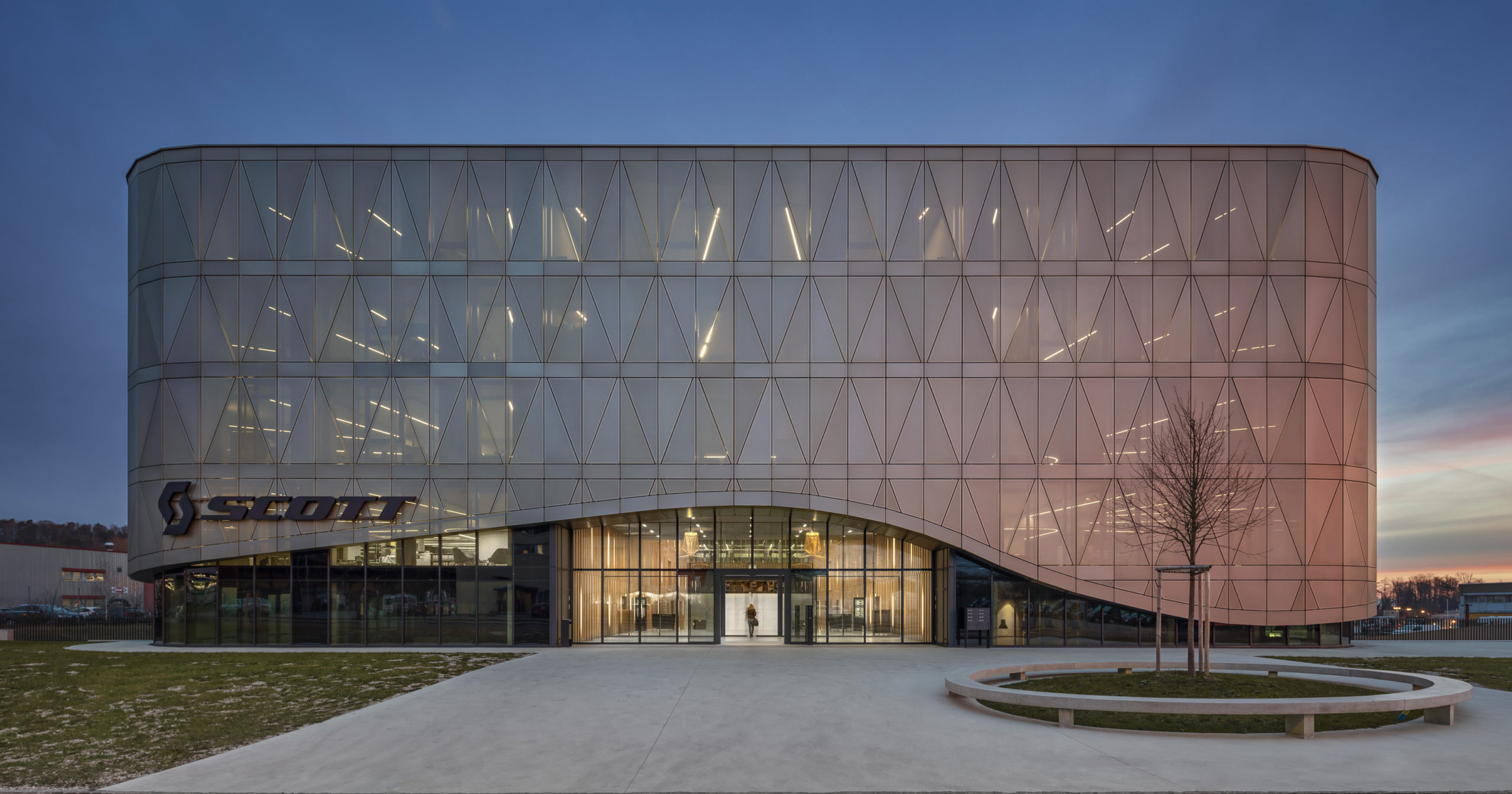
New Headquarters Scott Sports by IttenBrechbühl, Givisiez Switzerland | Photos: Upper by Philipp Zinniker, Lower by Faruk Pinjo | Jury Winner, 2021 A+Awards, Office Building Mid-Rise (5-15 Floors)
Journey Design
Journey design is a large part of the early office design. This goes beyond considering the journey from the entrance of the building to your desk, and how you might get there.
Journey design is about understanding the experience, through all sensory factors, in each part of the building. How are people going to interact with the building? What will their experience be and how will they perceive the company? These questions apply to both employees and visitors.
Most offices can be separated into zones:
Arrival or Entrance Zone
First entry into the office for both staff and visitors. Staff could have alternative entrance in larger office buildings. The entrance is often welcoming and open to the public.
Visitor or Public Zone
The visitor zone is where meetings may take place, whether in a formal meeting room or cafe. The visitor zone consists of employees and people that don’t work for the company. Usually, in larger offices, the visitor areas are kept separate from the main staff working areas.
Working Zone
The working zone is accessible to staff only and usually will consist of office/desk space, meeting rooms and the core functions of the company.
Social Zone
The social zone allows for more informal meetings, refreshments and other activities that aren’t suited to the working zone. How the employees and visitors journey to and through these zones should be carefully considered.
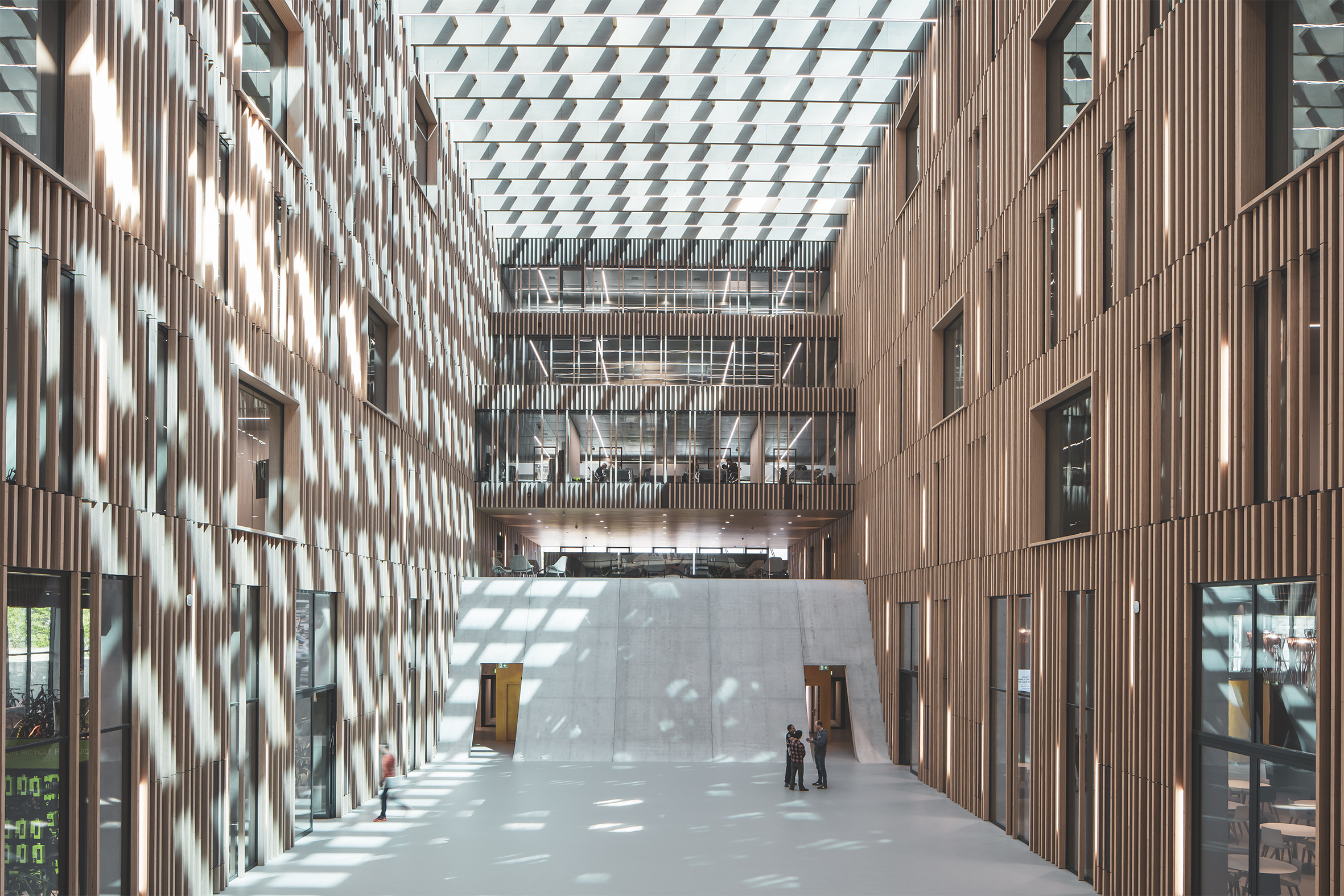
New Headquarters Scott Sports by IttenBrechbühl, Givisiez Switzerland | Photo by Simon Ricklin | Jury Winner, 2021 A+Awards, Office Building Mid-Rise (5-15 Floors)
Spatial and Room Requirements
In addition to these types of questions, it is also important to establish spatial and physical requirements from the organization. In short, what rooms/spaces do they need, how many staff do they have, what size canteen will they need, how many sanitary facilities, and so on.
These spaces will perform a variety of functions. The functions will have an impact on how that space is designed. For example, if the offices require focus work, consideration will be taken in minimizing noise and creating a good working environment without distraction. Let’s look at the room types:
- Focus work: routine work, long durations
- Casual / informal: more mobile spaces, small short casual meetings
- Private / quiet space: concentration, confidential, reflection
- Group work: casual/information meeting spaces, group tasks, away from focus area
- Meetings: dedicated rooms for meetings, work, learning, interviews etc.
- Amenities: areas for refreshment, relaxation, social interaction, wellbeing
- Services: support services such as IT, cleaning, security
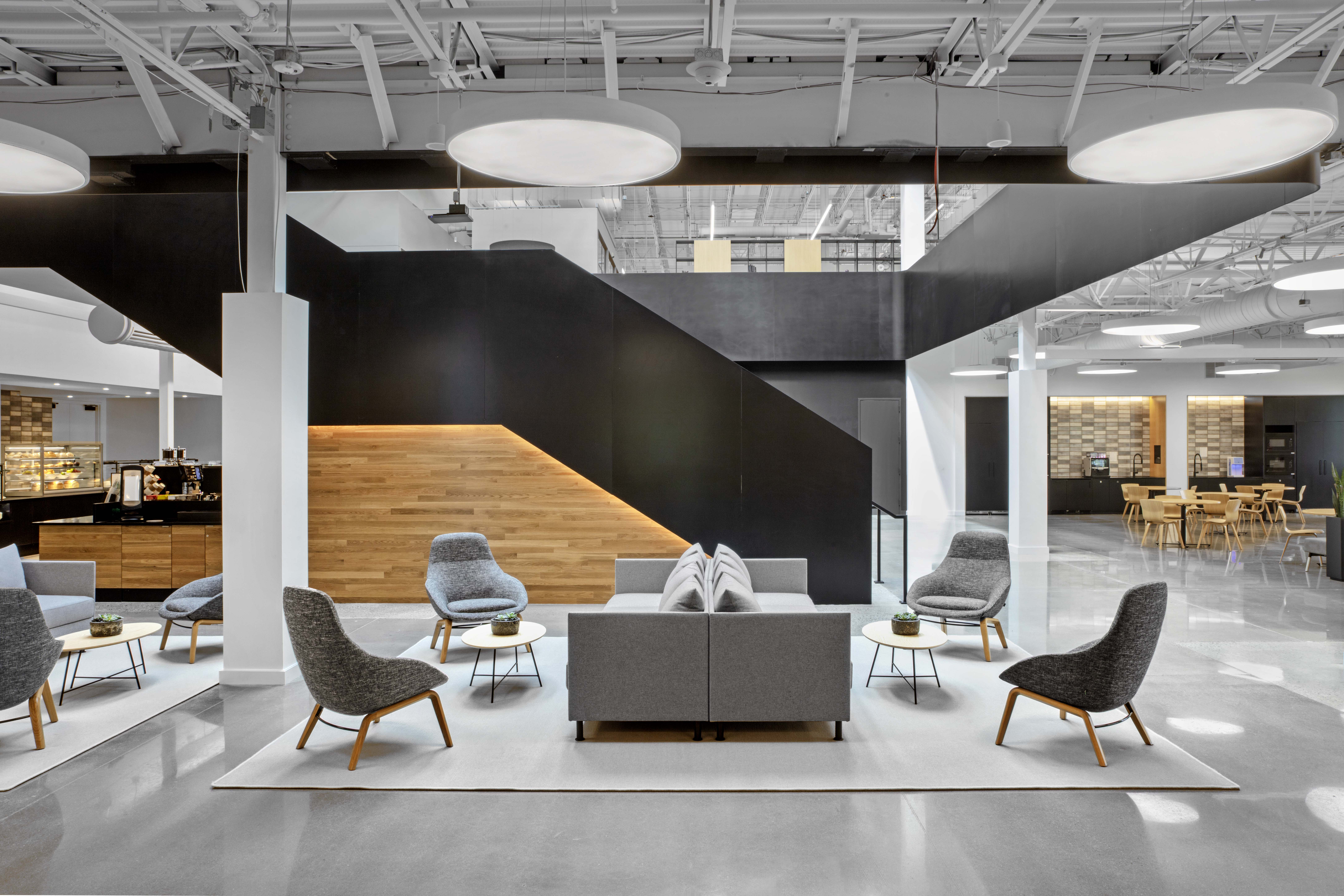
Kering Americas by HLW, Wayne, NJ, United States | Popular Choice, 2021 A+Awards, Office Interiors (>25, 000 sq ft)
Office Design Considerations
The following section will give general tips and pointers for good office design. Some of the suggestions below will be dependent on the size and nature of the office to be designed.
Accessibility and Inclusivity
All accessibility design standards should be met and exceeded where possible. Creating an inclusive and accessible office ensures it can be used by a wide and diverse range of people. Consider both visible and non visible disabilities and how the spaces can be used without the need for assistance. Spaces and facilities should be provided that avoid separation, segregation or unnecessary effort.
Flexibility
As mentioned earlier, offices are changing environments. The design must include flexibility to adapt to changes of the organization. Modular designs that are multifunctional can help to allow for these changes. Designs can also include options for easy upgrading as technology advances.
Safety and Security
Depending on the nature and location of the office, security measures are often an important consideration. Entry to the building itself should be welcoming and without obstruction, but it is often necessary to incorporate secure access to the non public areas. This should be done discreetly, and with the option of upgrading or altering as required.
Technology
Technology is a key part of a successful organization. Digital infrastructure must be integrated into the design early to ensure a strong workflows. Again, the technology must be organized and designed in such a way that upgrades are possible with minimal disruption.

Kering Americas by HLW, Wayne, NJ, United States | Popular Choice, 2021 A+Awards, Office Interiors (>25, 000 sq ft)
Employee Wellbeing
Working to conserve employee wellbeing can come in many forms. Work is a key part of our lives and it is important that employees feel supported and are given the opportunity and amenities to flourish. If an employee is feeling physically and mentally fit, they are more likely to feel engaged and driven in the workplace.
Provide an office that is comfortable, with a healthy working environment, along with good indoor air quality with a mix of natural and mechanical ventilation. Design facilities for reflection, and ensure the use of lighting, acoustics and colors reduce stress.
If appropriate, an onsite gym or social area can also be provided.
Lighting
An office contains a variety of spaces that fullfil different roles. The lighting design will need to reflect the different spaces. For example, the reception area may be designed to be light and bright and welcoming. While office spaces might have more focused lighting and measures to prevent glare. Quiet spaces and areas for reflection will have softer lighting. The lighting design of an workplace will enhance the mood and activities of the spaces. Lighting design incorporates both natural and artificial lighting techniques.
Acoustics
Similar to lighting design, the acoustics must be designed according to the spaces and functions carried out within those spaces.
For some open plan offices provide a challenge for some employees, as noise levels and distractions around them can have a negative effect on productivity. However, if an office is too quiet some report this to be a little unnerving.
Finding a good balance in the acoustics is important. Acoustic materials that absorb excess noise can help to improve communication between teams, improve privacy for private phone calls, and allow employees to focus better on complex or concentrated tasks.
Having a variety of spaces that are acoustically designed will allow for staff to select the space according to their requirements, ie, group discussion, formal meeting and so on.
Conclusion
Office design is a large topic and we’ve only scratched the surface here. The workplace has been changing over time and offices need to be flexible, considering how they will be used with employees of different generations who have varying needs for work-life balance. These considerations also include understanding what types of space are required in an office environment given that many people today don’t just use their desktop or laptop all day long at one location. We hope this blog post has provided you with some insight into getting started on your own journey towards designing an ideal workplace!
Architizer's new image-heavy daily newsletter, The Plug, is easy on the eyes, giving readers a quick jolt of inspiration to supercharge their days. Plug in to the latest design discussions by subscribing.

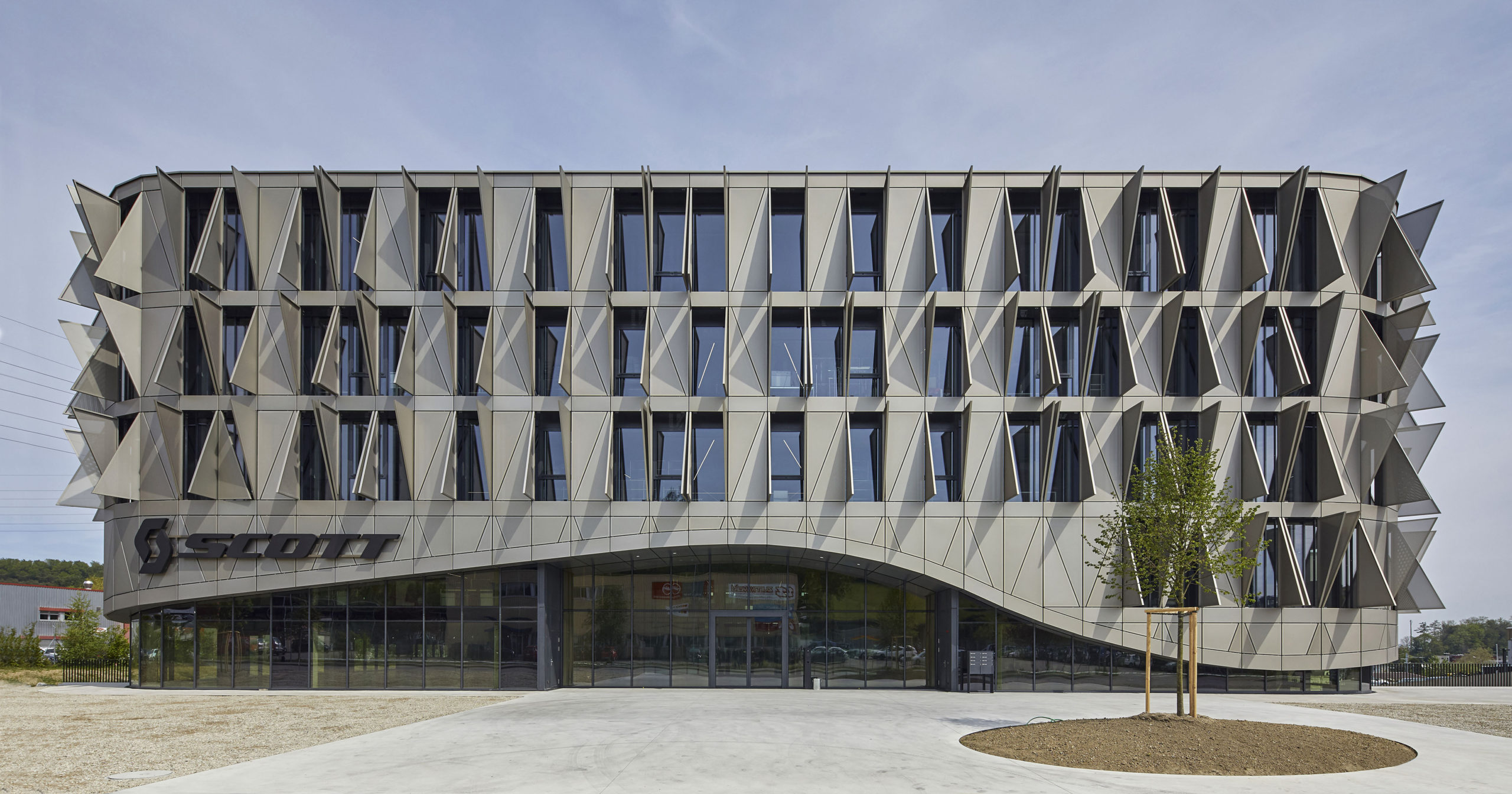





 Plus X
Plus X 


